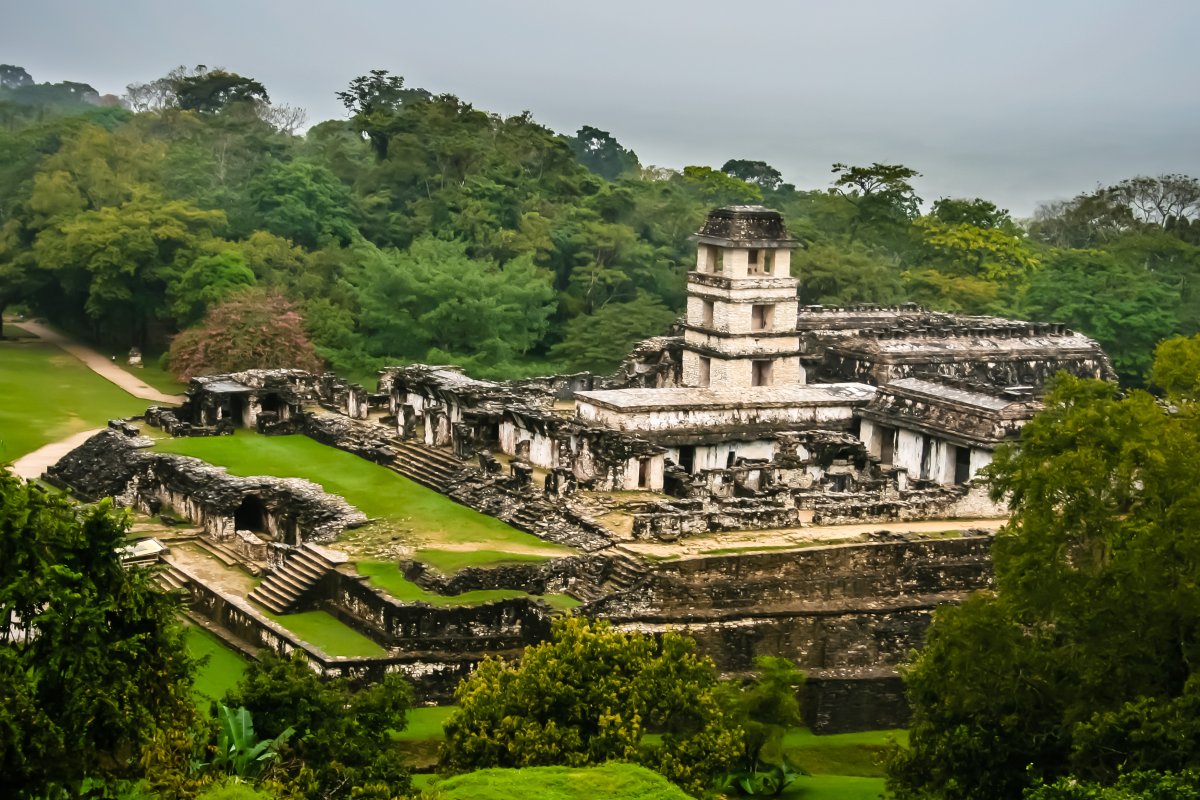Archaeologists have uncovered the remains of food eaten by ancient Maya elites during special ritual banquets.
Researchers from Mexico's National Institute of Anthropology and History (INAH) have identified more than 1,300 freshwater crab remains found in ritual deposits at the Palace of Palenque, a renowned Maya archaeological site in the southern state of Chiapas.
The palace is the largest architectural complex in the ancient city, which was occupied for centuries, reaching its zenith between A.D. 500 and A.D. 700, when its influence extended throughout the surrounding region, according to UNESCO.
The archaeological site contains some of the finest architecture, sculptures and carvings that have survived from the ancient Maya civilization.

The Maya civilization dominated what is now southeastern Mexico, Guatemala, Belize and the western areas of El Salvador and Honduras for more than 3,000 years until the era of Spanish colonization.
The ancient Maya were notable for their striking architecture and art; advanced calendar, mathematics and astronomical system; and for creating the only fully developed writing system in pre-Hispanic America.
The ruling and priestly elites of ancient Palenque used to enjoy endemic freshwater crabs, which they consumed as a delicacy in private ceremonies that commemorated special events, such as certain milestones in the palace's construction.
These crabs were considered to be a symbolic marker of regeneration. They were therefore consumed in ceremonies that marked the inauguration or closing of certain spaces and constructions within the palace complex at the city's height, according to INAH archaeologists.
"The symbolic significance of crabs in the ancient Maya world is a captivating topic. While there are no explicit references in surviving ancient texts, we can glean insights from the enduring monuments, ceramics, and legends," Fernando Moreira, a researcher who has studied the role of crabs in the ancient Maya world but was not involved in the latest findings, told Newsweek.
"Turning to Mesoamerican mythology, there's a widespread origin myth for corn involving a storm god who creates a cleft in a mountain using lighting, releasing corn to the world. Crabs feature prominently in various Mesoamerican tales, intertwining themes of creation and regeneration, often linked to the lunar cycle and the feminine," he said.
While the primary exploitation of crabs by the Maya seems to have been for culinary purposes, there is substantial evidence pointing towards their use in ritualistic contexts and as materials for decorative or symbolic items, according to Moreira.
The latest findings at Palenque have shed new light on the rituals that took place at the ancient city's Palace hundreds of years ago.
INAH researcher Carlos Varela Scherrer, who was involved in the investigations that uncovered the crab remains, said some modern-day Maya communities in northern Chiapas prepare large quantities of food on the eve of certain festive days. Afterward, they pour the remains of the food into excavated holes as an offering to the deities—as would have occurred in pre-Hispanic times.

"For the ancient Maya, it was important to hold ritual banquets where food was shared between the participants and the deities. Therefore, the recovery of crabs in Palenque opens new interpretations about the use of fauna and its cuisine," Scherrer said in a press release.
The researcher specializes in studying the remains of animals found in these kinds of deposits. The discovery of crab parts stands out because of the fragility of their remains, which are rarely recovered in archaeological contexts in the Maya Lowlands.
Two ritual deposits were uncovered during the recent research. As part of the latter, the researchers found an anthropomorphic stucco head with the probable representation of an ancient ruler of Palenque, a ceramic vessel depicting a Maya deity and a pipe in the shape of a river prawn, alongside the crab remains.
"In general terms," Scherrer said, "we were able to appreciate that these deposits are the product of events that were characterized by the consumption and burning of food and other objects, which were placed over cavities excavated in the floors and quickly covered again, enabling the exceptional conservation of archaeological material."
The latest discovery sheds new light on the religious significance of crabs in the culture of the Lowland Maya, particularly in how these animals were used to commemorate events at various locations within the Palace, Moreira said.
"What excites me most, however, is the potential for future research in non-elite areas. Questions like whether commoners consumed crabs or used them in rituals are intriguing and could reveal significant contrasts between elite ideologies and broader societal practices. The prospect of uncovering more about this aspect of Maya life is truly fascinating."
Lisa Johnson, a researcher with the Department of Anthropology at the University of Nevada, Las Vegas, told Newsweek we still do not know much about the non-elite population of Palenque. As a result, it is difficult to say whether or not crab was solely a delicacy consumed by the elites.
"Crab is not hard to find, they still run around the site and were walking into my excavation! So it would not have been hard to get," said Johnson, who was also not involved in the latest INAH research but has been investigating life in the homes of ancient Maya people who lived within sight of the Palace of Palenque.
"However, in other feasting contexts outside of the palace, crab was not a major element of the faunal remains left behind. We do find some crab, but the quantity and concentration that was found in the palace is unique. This may suggest a 'palace diet'—but it may also suggest there were particular types of meals for certain events."
What is "exciting" about the latest findings is the similarity in feasting practices across the city, according to Johnson.
"Certainly, the palace had the means to host much more elaborate feasts than the well-to-do Palencanos that my colleagues and I study, but it does reveal just how important feasting was for Maya society," she said. "To host a feast brings prestige to the host and fulfills the Maya principle of reciprocity. Archaeologists have long understood that feasting is about so much more than eating. It is a social and ritual affair. It has elements of performance and for the rulers of Palenque would have been opportunities to exercise their status and power."
Do you have a tip on a science story that Newsweek should be covering? Do you have a question about the ancient Maya? Let us know via science@newsweek.com.
Update 1/26/24, 6:13 a.m. ET: This article has been updated with additional comments from Fernando Moreira and Lisa Johnson.
Uncommon Knowledge
Newsweek is committed to challenging conventional wisdom and finding connections in the search for common ground.
Newsweek is committed to challenging conventional wisdom and finding connections in the search for common ground.
About the writer
Aristos is a Newsweek science reporter with the London, U.K., bureau. He reports on science and health topics, including; animal, ... Read more





